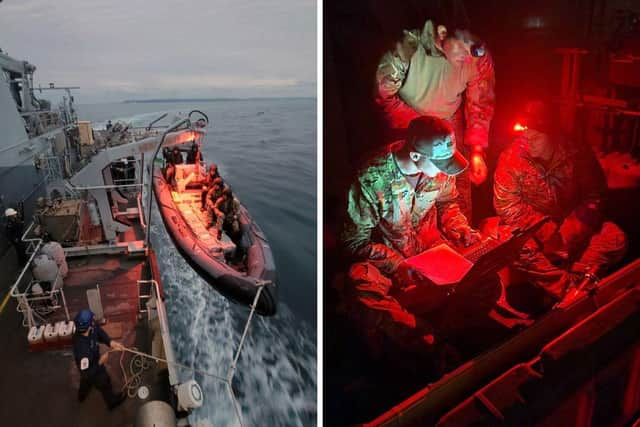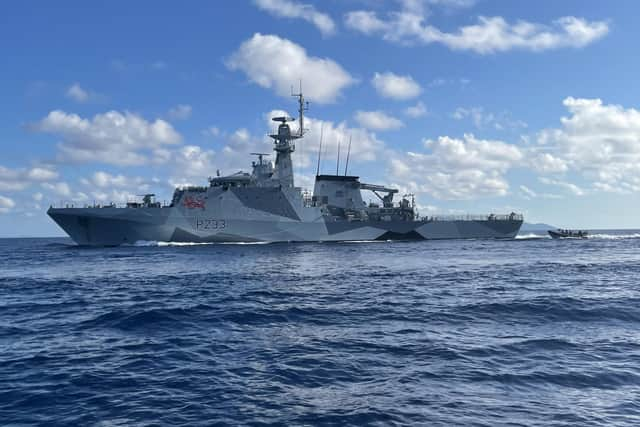Royal Navy's HMS Tamar joins international mine exercise off coast of Korea
and live on Freeview channel 276
MiWEx – Mine Warfare Exercise – has been running for seven years and is one of the main tests of navies to deal with mined waters.
HMS Tamar and her sister ship Spey, which have Portsmouth as their home port but which are in semi-permanently in the Indo-Pacific – meant that the Royal Navy was represented at this year’s event, which saw international navies join together to cope with a mine threat off the coast of Republic of Korea.
Advertisement
Hide AdAdvertisement
Hide Ad

And it allowed participants – including the hosts, the USA, Australia, Belgium, Canada, Italy, Japan, Columbia, New Zealand, Singapore and Turkey – to share the latest ideas, tech and techniques in mine warfare.
The Royal Navy says it is moving away from operating dedicated minehunting ships to deploying specialist teams with minehunting equipment, including crewless boats, operating out of shipping-container-sized boxes or ‘pods’ which can be set up on land, a patrol ship like Tamar, or next-generation Type 26 and 31 frigates.
This is known as ‘modularisation’ or ‘crane on/crane off capability’, and all five River-class vessels are equipped with such a crane.
To test the concept, Tamar hosted a mobile US Navy diving/explosive ordnance disposal team. Normally based in Guam, they can deploy throughout the Western Pacific – wherever specialist mine countermeasures experts are needed.
Advertisement
Hide AdAdvertisement
Hide Ad

From Tamar, they planned and operated Remus 100 uncrewed underwater vehicles – launched from the warship’s sea boats – to scan swathes of the seabed up to a depth of 100 metres, before returning from their mission with data for analysis.
‘It was cool to see new kit and interesting to see how it works. Working with the Americans was good fun too,’ said Seaman Specialist Kieran Nicholson.
Midshipman Alex Taylor added: ‘The embarkation gave a fascinating insight into how the US explosive ordnance disposal team work. We relished helping to project their capability using the ship as a host.”
Gunner Able Seaman Lewis Palin-John enjoyed the chance to take part in something new. ‘It was interesting to see how different roles can be adopted by the ship with the embarkation of different specialists,” he said.
Advertisement
Hide AdAdvertisement
Hide Ad“The US Navy personnel were very respectful and it seemed to go smoothly.’
Having just taken part in a large-scale US-led humanitarian mission, Pacific Partnership, around the Philippines, Commander Teilo Elliot-Smith, HMS Tamar’s Commanding Officer, said the latest exercise underlined the versatility of the five patrol ships which are deployed worldwide on varied missions.
‘Recognising that Tamar can bring real capability options to the table is an important part of our purpose in being permanently deployed here. The US detachment was impressive and the ship’s company were great in ensuring that working together we became greater than the sum of our parts,” he added.
‘The tensions felt in this part of the world are very real and there will always be an essential role for mine warfare and its counter-measures.’
